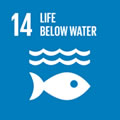Por favor, use este identificador para citar o enlazar a este item:
http://hdl.handle.net/10261/285651COMPARTIR / EXPORTAR:
 SHARE SHARE
 CORE
BASE CORE
BASE
|
|
| Visualizar otros formatos: MARC | Dublin Core | RDF | ORE | MODS | METS | DIDL | DATACITE | |

| Título: | High-resolution variability of dissolved and suspended organic matter in the Cape Verde Frontal Zone |
Autor: | Campanero, Rubén CSIC; Burgoa, Nadia; Fernández-Castro, Bieito CSIC ORCID; Valiente Rodríguez, Sara CSIC; Nieto-Cid, Mar CSIC ORCID; Martínez-Pérez, Alba María CSIC ORCID; Gelado-Caballero, María Dolores; Hernández, Nauzet; Marrero-Díaz, Ángeles; Machín, Francisco CSIC ORCID; Rodríguez-Santana, Ángel; Hernández-García, Inés; Delgado Huertas, Antonio CSIC ORCID ; Martínez-Marrero, Antonio; Arístegui, Javier; Álvarez-Salgado, Xosé Antón CSIC ORCID | Palabras clave: | Particulate organic matter (POM) Dissolved organic matter Colored dissolved organic matter Submesoscale Mesoscale Cape Verde Frontal Zone Carbon cycling Fluorescent dissolved organic matter (FDOM) |
Fecha de publicación: | 2022 | Editor: | Frontiers Media | Citación: | Frontiers in Marine Science 9: 1006432 (2022) | Resumen: | Distributions of dissolved (DOM) and suspended (POM) organic matter, and their chromophoric (CDOM) and fluorescent (FDOM) fractions, are investigated at high resolution (< 10 km) in the Cape Verde Frontal Zone (CVFZ) during fall 2017. In the epipelagic layer (< 200 m), meso- and submesoscale structures (meanders, eddies) captured by the high resolution sampling dictate the tight coupling between physical and biogeochemical parameters at the front. Remarkably, fluorescent humic-like substances show relatively high fluorescence intensities between 50 and 150 m, apparently not related to local mineralization processes. We hypothesize that it is due to the input of Sahara dust, which transports highly re-worked DOM with distinctive optical properties. In the mesopelagic layer (200-1500 m), our results suggest that DOM and POM mineralization occurs mainly during the transit of the water masses from the formation sites to the CVFZ. Therefore, most of the local mineralization seems to be due to fast-sinking POM produced in situ or imported from the Mauritanian upwelling. These local mineralization processes lead to the production of refractory CDOM, an empirical evidence of the microbial carbon pump mechanism. DOM released from these fast-sinking POM is the likely reason behind the observed columns of relatively high DOC surrounded by areas of lower concentration. DOM and POM dynamics in the CVFZ has turned out to be very complex, in parallel to the complexity of meso- and submesoscale structures present in the area. On top of this high resolution variability, the input of Sahara dust or the release of DOM from sinking particles have been hypothesized to explain the observed distributions | Descripción: | 21 pages, 8 figures, 4 tables.-- This is an open-access article distributed under the terms of the Creative Commons Attribution License (CC BY) | Versión del editor: | https://doi.org/10.3389/fmars.2022.1006432 | URI: | http://hdl.handle.net/10261/285651 | DOI: | 10.3389/fmars.2022.1006432 | E-ISSN: | 2296-7745 |
| Aparece en las colecciones: | (IEO) Artículos (IACT) Artículos (IIM) Artículos |
Ficheros en este ítem:
| Fichero | Descripción | Tamaño | Formato | |
|---|---|---|---|---|
| High_resolution_variability_OA_2022.pdf | 32,65 MB | Adobe PDF |  Visualizar/Abrir | |
| Data Sheet 1.docx | 1,69 MB | Microsoft Word XML | Visualizar/Abrir |
CORE Recommender
SCOPUSTM
Citations
3
checked on 12-mar-2024
WEB OF SCIENCETM
Citations
3
checked on 22-feb-2024
Page view(s)
64
checked on 15-abr-2024
Download(s)
68
checked on 15-abr-2024
Google ScholarTM
Check
Altmetric
Altmetric
Este item está licenciado bajo una Licencia Creative Commons



